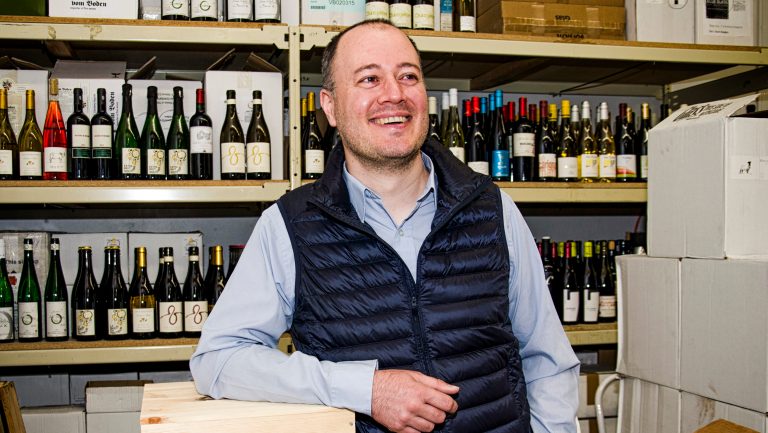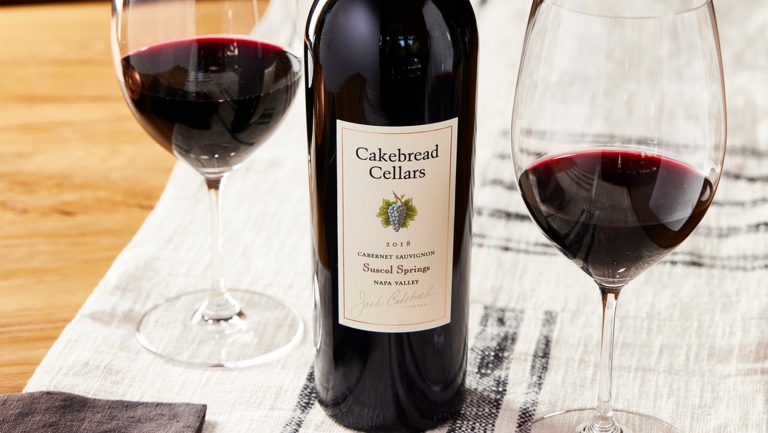Luke Wohlers, owner of Walden Selections, a Seattle-based wine importing and distributing company, arrives at the restaurant Heartwood Provisions to taste beverage director Amanda Reed through a handful of bottles. Wohler is dressed in a smart long-sleeved wool shirt topped with a thin down vest. It’s very Seattle—very fitting, given the former New Yorker’s full-on embrace of the more casual, eco-geeky Pacific Northwest. Even his company—named after that “Walden” and that pond (which Wohlers used to run around and swim in in his early 30s)—embraces a sustainably minded selection of wines.
To Wohlers and his wife and business partner, Trinie Thai-Parker, this involves seeking out mostly European producers who are farming their own fruit as organically as possible, within the bounds of each grower’s terroir and climate. As Henry David Thoreau said in the book “Walden,” “Live in each season as it passes; breathe the air, drink the drink, taste the fruit, and resign yourself to the influence of the earth.” For Wohlers, it’s a matter not merely of being dedicated to organics or biodynamics but of acknowledging that those practices can help the place to shine through in the wines.
“We’re looking for producers who have done such great work in the vineyard that they’re able to take the grapes into the winery and say, ‘We’re not going to do a whole lot to this,’” says Wohlers. “The fruit just needs to be stewarded into the bottle.”

Don’t miss the latest drinks industry news and insights. Sign up for our award-winning newsletters and get insider intel, resources, and trends delivered to your inbox every week.
This method of winemaking means that a certain style of wine flows through Walden’s portfolio—one of freshness and bright acidity; it’s wine that is destined for the dinner table.
As she tastes a 2015 Château de Béru Chablis, Reed ruminates on why Wohlers is so easy to work with—for restaurants, in particular. His unique understanding of the demands of on-premises wine sales is thanks in large part to the years he spent working as a sommelier himself. He was a wine captain at Eleven Madison Park in New York, a sommelier at RN74 in Seattle, and the wine director at New York’s Betony before he stepped out to start Walden Selections in 2014.
“We’re coming at this from ‘Hey buyer, we know what you’re going through,’” says Wohlers. “We know what your hours are and what little time you have to taste my five wines. I’m going to bring you five wines that make sense [for your list], at the best price I can give you. We’re coming at it from a hospitality-first aspect, a move right out of the Danny Meyer playbook.”
So far, his method is working. Walden’s sales have nearly doubled every year since it launched. Today Walden Selections imports 200 to 250 wines from 60 or 70 producers. Earlier this year the company opened business in Oregon.
Whether it’s a tool to be able to tell stories or a means of educating himself, Wohlers has found that the best way to know the work of his producers intimately is to visit them regularly. Last year he and Trinie helped plant rootstock on a steep slope at Oregon’s Beckham Estate Vineyard, and they were enchanted by silky Nebbiolos from Italy’s Alpine Valtellina region while visiting the Arturo Pelizzatti Perego estate (Ar. Pe. Pe.). Wohlers is happy to scramble up a mountainside to find something new. “I’ve always been a champion of underdog wines that don’t get any attention,” he says. “There’s really good value to be found in wines no one has heard of.” Here are six lively bottles from his portfolio that are worth rooting for now.
Six Wines Wohlers Recommends Now
NV Hild Elbling Sekt Brut
“This little-known grape, Elbling, used to be planted more widely than Riesling throughout Germany. The Paris Basin extends to this particular area of the Upper Mosel, so the soils are chalky limestone here, before you move down to the slate of the Lower Mosel. Because of that, I think you get a certain salinity, freshness, and citrus character. But [Hild] leaves it on the lees for 12 months, so it has some richness too. It’s great with seafood and oysters. This wine is labeled nonvintage, but in truth it’s always a single year; Hild just doesn’t apply for the vintage-specific label. Sparkling Elbling is so obscure, but it’s a great glass pour wine.”
2014 Analemma Atavus Vineyard Gewürztraminer
“This changed my perception of Gewürz from the New World. The grapes come from the Atavus vineyard, on Washington’s side of the Columbia Gorge AVA, about 60 miles east of Vancouver, Washington, and Portland, Oregon. The vineyard was planted by Walter Clore [considered the founder of Washington wine] in the late ’60s-early ’70s. It’s a really steep site, overlooking the Columbia River, and a cool region, so Clore looked toward Germany and Switzerland when choosing clones—not France. This is a very elegant, lightly perfumed Gewürztraminer, and it’s vinifed dry. Steven Thompson [the winemaker and owner of Analemma] has revived the possibility of aromatic grape varietals in the New World.”
2014 Beckham Estate Vineyard Amphora Creta A.D. Beckham Pinot Noir
“Winemaker Andrew Beckham is a ceramicist by trade, and a full-time high school pottery teacher. In 2005 he and his wife, Andrea, bought a piece of land in the Willamette’s Chehalem Mountains AVA with the intention of building a studio. At some point, they realized they had a good site for Pinot Noir, and soon they were growing grapes and making wine. Eventually Andrew found a chemist to help him find the right clay and the right firing methods, and drawing on inspiration from Italy’s Elizabetta Foradori, he began making amphorae. This wine, the Amphora Creta, is 100 percent Pinot Noir, fermented and aged in clay. The clay doesn’t impart any flavor into the wine, but it breathes a bit more than oak, so the development happens at an increased rate; you get a silkiness to the tannins and a spiciness too.”
2013 Tenuta di Valgiano Colline Lucchesi Palistorti Rosso
“This wine comes from Italy’s Colline Lucchesi DOC in Tuscany, about a half an hour from the coast, where there’s lots of rain, lots of sun, and higher elevation. This has dark fruit and spice—hallmark Sangiovese. The winemaker, Saverio Petrilli, has been at the winery since Moreno Petrini and Laura di Collabiano founded it in 1992, and he lives on the property with his family. Valgiano is a really beautiful place and has become a benchmark for biodynamics in the region. It’s convinced several others to move to biodynamic farming, too.”
Alexander Jules Amontillado 3/10
“Alexander Jules is a line of barrel-selected sherries from Alex Russan, who used to be a green coffee buyer and who found a passion for sherry. He goes to Spain, tastes at different bodegas, then creates his own blend. He’ll find a solera that’s maybe 65 casks and choose six. He might be choosing one barrel of one yeast strain and a couple of barrels of another strain to be able to put together something that’s interesting and unique. This Jerez-Xérès Amontillado is sourced from a single vineyard, Pago del Hornillo. It’s bright, saline, and long, with aromatics of orange, spice, and fresh butter.”
2014 Ar. Pe. Pe. Rosso di Valtellina
“This is a red-fruited Nebbiolo, full of raspberry, strawberry, cherry, and a very light hint of dried herbs and some mushrooms. The tannins are quite soft and long—they’re not Nebbiolo Barolo tannins; they’re very Nebbiolo Valtellina tannins. It’s a different structure than Piedmont. Grown in an alpine, cool climate, it just has this really bright, fresh acidity that keeps the wine lifted. This wine looks like it could be a rosé, but there’s actually quite a bit of structure in the palate. It just shows that Nebbiolo is a very lightly pigmented grape but can still have lots of depth and tannins and phenolic structure.”

Dispatch
Sign up for our award-winning newsletter
Don’t miss the latest drinks industry news and insights—delivered to your inbox every week.
When she’s not writing about beverage, travel, or weird science, Julie H. Case can be found deep in America’s forests, foraging for mushrooms.






